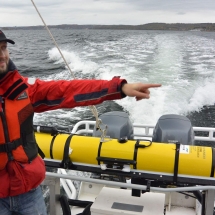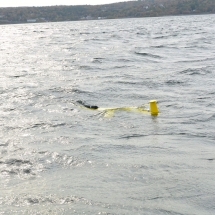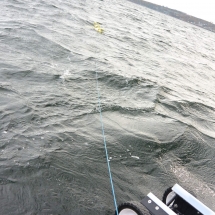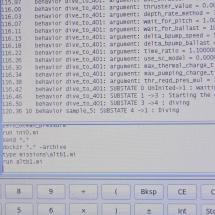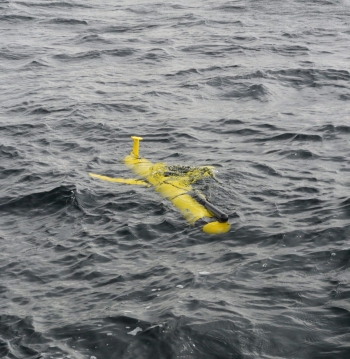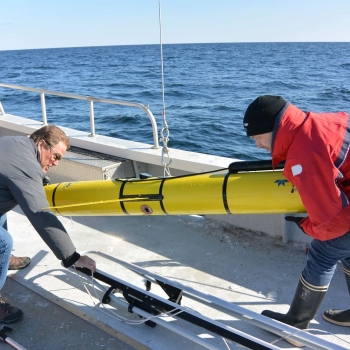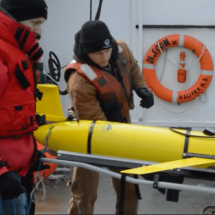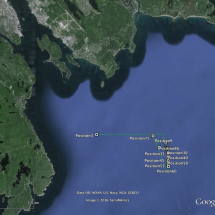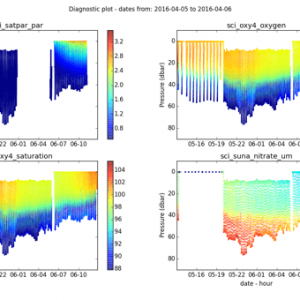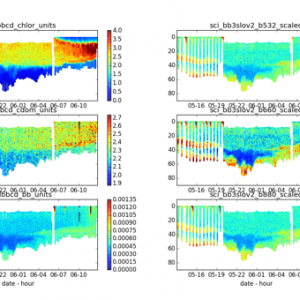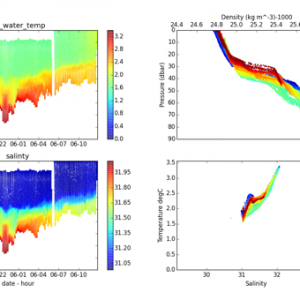See more Scotian Shelf deployment photos and video here.
A three part mission, identical that which is planned for Baffin Bay, was run over the course of 24 hours. The first part of the mission represents the approach to the marginal ice zone, surfacing safely about 1 km away. The second part of the mission is the most critical and risky: travelling under the ice during this part of the mission, the glider does not surface and stays well below the ice and ice keels, which may be over 20 m deep! The glider is commanded to travel 1-2 km under ice, turn around and surface only when it comes back to open water. Depending on how far under the ice we go and the prevailing currents, this can take more than 10 hours. Finally, the last part of the mission is to go a bit farther away from the ice, back to the starting location.
On the Scotian Shelf, the glider completed this mission with one error : an internal alarm, reset only when there is surface communication, went off at 10 hours while the glider was still traveling in the “under ice” portion of mission. So, the glider came up a bit early, and then went on to its planned recovery location.
To prevent this from happening in the field, and possibly surfacing under ice, we can lengthen the time for this alarm to 12 or more hours. So, realizing this situation in the safety of Scotian Shelf waters (with no ice) helps us get all of our glider mission settings correct.
The high-resolution physical and bio-optical data show a strong pycnocline (sharp change in sci_water_temp, salinity and density) at 30 – 40 m. High concentrations of chlorophyll (sci_bbfldcd_chlor_units) and oxygen saturation (sci_oxy4_saturation) above 100 % above the pycnocline show that that Scotian Shelf surface waters are highly productive for phytoplankton. Consequently, nutrient levels (sci_suna_nitratue_um) show that nitrate is being consumed by the phytoplankton above the pycnocline with strong concentrations below. High values of optical backscattering at the pycnocline (e.g., bb3slov2_bb660_scaled) shows a typical situation where a large concentration of plankton (phytoplankton and their grazers) hang out at sharp changes in density. Another high scattering layer can be seen just above the bottom of the Scotian Shelf due to sediments suspended by ocean bottom currents.
All the mission plots can be found here.


